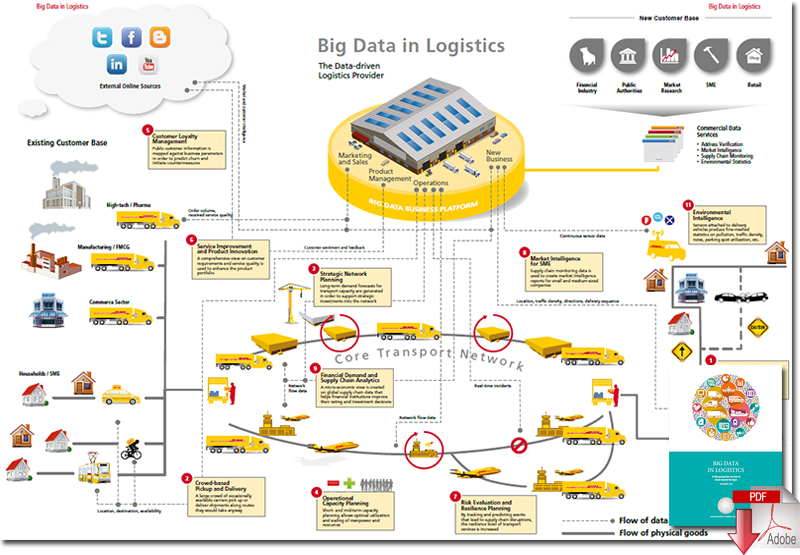CAPACITY AVAILABLE
⚑ The capacity of a system or resource to produce a quantity of output in a given time period.
It is affected by the following:
- Product specifications. If the product specifications change, the work content (work required to make the product) will change, thus affecting the number of units that can be produced.
- Product mix. Each products has its own work content measured in the time it takes to make the product. If the mix of products being produced changes, the total work content for the mix will change.
- Plant and equipment. This relates to the method used to make the product. If any of this value is changed then capacity of the work center plant also changes. For example a faster machine is used - the output will change.
- Work effort. This relates to the speed or pace at which the work is done. If the workforce changes pace, perhaps producing more in a given time, the capacity will be altered.
Measuring capacity
Unit of output If the variety of products produced at a work center or in a plant is not large, it is often possible to use unit common to all products.
Paper mills measure capacity in tons of paper, breweries in barrels of beer, and automobile manufacturers in numbers of cars.
However, if a variety of products is made, a good common may not exist. In this case, the unit common to all products is time.
Standard time Using time-study techniques, the standard time for a job can be determined - that is, the time it would take a qualified operator working at a normal pace to do the job. It provides a yardstick measuring work content and a unit for stating capacity.
Level of capacity
Capacity needs to be measured on at least three levels :
- Machine or individual worker
- Work center
- Plant, which can be considered as a group of different work centers.
Determining Capacity Available
There are two ways of determining the capacity available: measurement and calculation.
Demonstrated (measured) capacity is figured from historical data. Calculated or rated capacity is based on available time, utilization, and efficiency.
Calculated or Rated capacity is based on available time, utilization and efficiency.
Rated capacity = Available time x Utilization x Efficiency
Available time
The number of hours a work center can be used. The available time depends on the number of machines, the number of workers and the hours of operation.
Available time = Hours of operation X Number of machines X Number of working days
Example:
A work center has 8 machines and is operated for 9 hours a day 7 days a week. What is the available time?
Available time = hours X no.
machine X no. production
= 9 hours X 8 machines X 7
= 504 hours
Utilization
The available time is the maximum hours we can expect from the work center. However, it is unlikely this will be attained all the time. Downtime can occur due to machine breakdown, absenteeism, lack of material and all those problems that cause unavoidable delays. The percentage of time that the work center is active compared to the available time is called work center utilization:
UTILIZATION = HOURS ACTUALLY WORKED X 100%
AVAILABLE HOURS
Example:
A work centre is available 60 hours but actually produced goods for 30 hours. What is the utilization of the work centre ?
Example:
A work centre is available 60 hours but actually produced goods for 30 hours. What is the utilization of the work centre ?
30 hours X 100% = 50%
60 hours
Efficiency
It is possible for a work center to utilize 100 hours a week but not produce 100 standard hours of work. The workers might be working at faster pace or slower pace than the standard working pace, causing the efficiency of the work center to be more or less than 100%.
Efficiency = Actual rate production X 100%
Standard rate of production
Example:
A work centre produces 300 units in a shift. The standard for that item is 205 units in a shift. What is the efficiency of the work centre?
= 300 units X 100%
205 units
= 146.31%
Demonstrated capacity
One way to find out the capacity of a work center is to examine the previous production records and to use that information as the available capacity of the work center. Notice that demonstrated capacity is average, not maximum, output.
Demonstrated capacity = Total standard time
Number of period
Total standard time = Setup time + (runtime per piece X number of unit)
Example:
Over the previous 14 weeks, a work centre produced 220, 230, 250 and 240 standard hours of work. What is the demonstrated capacity of the work centre?
Example:
Over the previous 14 weeks, a work centre produced 220, 230, 250 and 240 standard hours of work. What is the demonstrated capacity of the work centre?
= 220 + 230 + 250 + 240
14
= 67.1 hours
CAPACITY REQUIRED (LOAD)
Capacity requirements are generated by the priority planning system and involve translating priorities, given in units of product or some common unit, into hours of work required at each work center in each time period.
This translation takes place at each of the priority planning levels from production planning to master production scheduling to material requirements planning.
The time needed for each order is the sum of the setup time and the run time. The run time is equal to the run time per piece multiplied by the number of pieces in the order.
Load
The load on a work center is the sum of the required times for all the planned and actual orders to be run on the work center in a specified period. The steps in calculating load are as follows:
• Determine the standard hours of operation time for each planned and released order for each work center by the time period
• Add all the standard hours together for each work center in each period. The result is the total required capacity (load) on that work center for each time period of the plan.
Example:
Example:
That's all for this entry. I hope you guys gain something from this entry.
Any questions regarding this entry you can drop your questions below on the comment section. Thank you for reading 😉
Any questions regarding this entry you can drop your questions below on the comment section. Thank you for reading 😉













